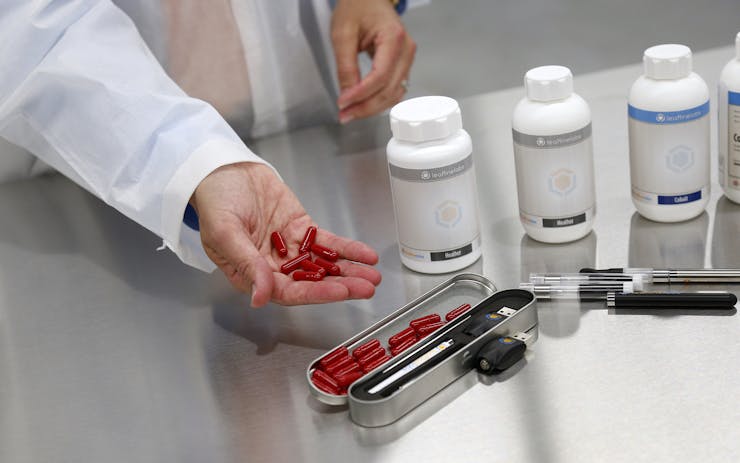ST. PAUL, Minn. (AP) — Minnesota’s two licensed medical marijuana manufacturers have lost a combined $11 million in just two years of sales, according to financial documents obtained by The Associated Press, continuing losses that hint at systemic problems with the state’s tightly regulated program despite a recent expansion that allowed thousands more patients to buy the medication.
Minnesota Medical Solutions posted a $1.2 million loss in 2016, a year after losing more than $3 million. But LeafLine Labs’ losses worsened: The company said it lost $4.7 million last year, after losing $2.2 million loss in 2015.
Those figures come from annual financial statements the private companies provided the state that were obtained through an open records request.
LeafLine chief executive officer Andrew Bachman said his patients should not worry about the company’s performance and what it means for their long-term future, saying that LeafLine was still beating its own financial plans. He chalked up the large loss to a rapid expansion in year two, which included opening three dispensaries and hiring the necessary staff.
“This is the cost of doing medicinal cannabis correctly,” Bachman said. “The goal was never to post a profit early. It was to take care of people, always.”
Minnesota Medical Solutions chief executive Kyle Kingsley painted his company’s decreasing losses as a positive, and said he hopes to break even in 2017 as the company continues retooling its business to reduce costs. But the key, he said, was boosting awareness for physicians and prospective patients that medical marijuana is an option.
But the losses add to concerns with Minnesota’s medical marijuana program.
State lawmakers are moving to crack down on Minnesota Medical Solutions, or MinnMed, after its former executives were charged with illegally shipping $500,000 of marijuana oils to a New York subsidiary company — a case still moving through court. The financial constraints on the program led state regulators to seek extra funding to help cover the costs of its patient database and inspections of manufacturers.
Both companies have repeatedly professed little hope in turning a large profit in the early years. They each raised tens of millions of dollars, according to filings with the Securities and Exchange Commission, to help weather a difficult launch period and lackluster sales when medical marijuana sales began in July 2015, more than a year after the Legislature passed its law.
The continued losses are driven largely by Minnesota’s program being among the most restrictive of 30 states that allow medical marijuana. Using the plant form is banned, and the state limits the availability of marijuana pills and oils to patients with 10 severe conditions. Each manufacturer is required to perform several rounds of testing on their medication and must run four dispensaries across the state.
Even the decision last summer to allow medical marijuana for people suffering chronic pain — which added thousands more patients — did little to stem the losses, as some lawmakers and advocates expected. Though each manufacturer more than quadrupled revenues, they still posted heavy losses.
A top Republican lawmaker involved in medical marijuana issues said the companies may need a full year with that expanded patient count to right the ship. And if not, Rep. Nick Zerwas said they shouldn’t look to the Legislature for a major fix.
“I don’t think there is going to be any appetite for a … broadening of conditions or delivery forms,” Zerwas said, referencing the ban on smoking or vaporizing the plant material. “It’s not the job of the state government to create conditions in which private companies can be profitable for selling marijuana.”




